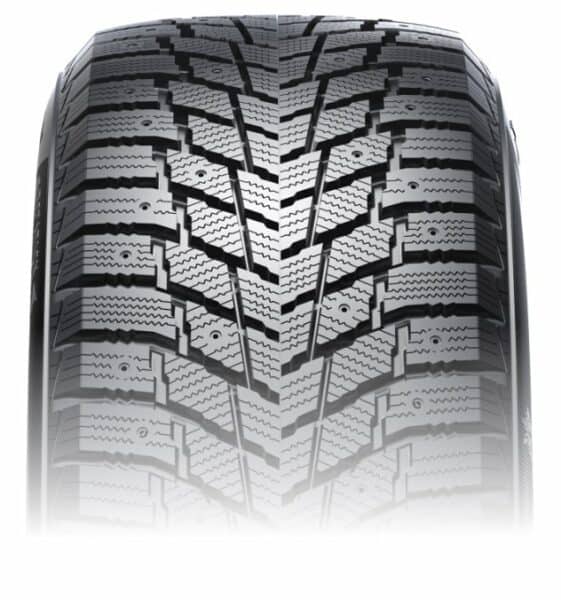Whether your region requires you to install snow-rated tires during the cold months or you simply want to sport them for added safety, you should know how much a winter tire costs. Many car owners just don’t install winter tires because they believe they’re unaffordable.
While winter tires are typically known to be more expensive, affordable options from growing tire brands like Sailun Tire don’t compromise on the quality and performance drivers expect on icy roads.
But even the pricer ones are more affordable than your rising insurance premium, likely medical bills, and automotive repairs (not covered in the insurance policy) that you must endure due to an accident in harsh winter conditions.
Here, we will explain the cost of different winter tires and the additional expenses associated with them. If you’re in the market for new winter tires — from value-based to premium — check out our complete buying guide here.
So, how much do snow tires cost, and what should you expect to pay?
Many factors affect the price of winter tires, including brand, type, quality, and size. Since every brand has its criteria to evaluate the price of its rubber, we would avoid commenting on it. However, we will discuss type, quality, and size to give you a fair idea of winter or snow tires.
For a compact car with a more standard 205/55R16 size, below are approximate prices.
Type and Size
The three main types of winters you find in the market include studless, studded, and winter performance.
Studless Tires
For most people, studless winter tires are a perfect companion in cold conditions. These incorporate biting edges and soft rubber compounds, making them flexible for winter. A standard studdless tire will cost you anywhere between $60 and $550, each.
On average, for a typical compact car, expect to pay around $100-$150 per tire or $400-$600 for all four. For an SUV or light-duty pickup, the price goes up to $200-$400 each or $800-$1,200 for a set of four.
Studded Tires
For extreme weather conditions like freezing rain, sleet, and wet ice, studded tires are ideal for a safe driving experience. The metal studs fixed on these tires bite into ice, giving you improved grip and handling. A studded rubber would cost you around $75-$550 or more per tire. For two pairs, you can expect to pay between $300 and $2,200.
There are also studdable options, like the Sailun Iceblazer WSTX studdable performance winter tire trusted by over 1-million drivers in Canada alone, which won’t break the bank yet designed for drivers that demand maximum traction in severe weather conditions.
Winter Performance Tires
For those who do not want to leave their sports cars or performance sedans in their garage in winter, they should consider winter performance tires. They are designed to offer excellent traction at high speeds on wet and dry roads. However, they are not your perfect companion for ice or snow-packed roads. A regular high performer is available at around $100-$500 each or $400-$2,000 for all four.
What factors affect the price of snow-rated tires?
For all the prices mentioned above, the smaller the size, the lower the cost. However, the price variation also depends on the tire brand, with American tires selling higher than Chinese-made tires.
Other Expenses associated with winter tires
The prices we shared above are purely for snow tires; they do not include installation charges. For installation, you have two choices. You can either mount the winter rubber on the existing wheels or buy a new set of wheels for all tires.
- If you go for a semi-annual tire change on your existing wheels, it will generally cost you around $40-$80 for all tires. The cost includes re-mounting and re-balancing. On the other hand, you can buy new wheels for all tires, making it effortless to put on winters when the snow, ice, and slush appear. The four new wheels will set you back $120-$500 or more. You can always try secondhand wheels; they may cost as low as $40-$80.
- In the U.S., federal law demands new vehicles to come with a Tire Pressure Monitoring System (TPMS). According to the news by Consumer Reports, the cars with disabled TPMS can’t have the winter tires installed. So, to install the TPMS sensors, you have to pay an extra $50-$125 for each tire, according to your vehicle’s brand and model.
- If you are going to use studdable winter tires, the optional metal studs will cost you an additional $15-$25 per tire.

Tips for shopping for winter tires
- Before you shop for winter tires, you should know the recommended size, speed rating, and load rating for your vehicles. You can find these details in the doorjamb, glove compartment, trunk lid, and fuel-filler door, in addition to the car’s manual. Here’s our guide on reading these tire markings.
- Nearly all tire manufacturers create winter and snow tires, so it is entirely up to you to pick a tire that suits your needs and budget. It is wise to compare prices of different tires, keeping in view “out the door” and “all in” costs. The latter comprises everything from the valve stem, tire installation, and wheel balancing. However, some workshops require an extra $2-$25 per tire for these services.
- If you have to buy under a tight budget, you can consider used winter tires. However, you need to be very careful with certain things like tread depth. It is prudent to measure the tread depth and not buy a tire with less than 5/32″ (4 mm) depth. Furthermore, if you find any cuts or ruptures in the sidewall, swells, blisters, or tread distortion, do not buy them. Last but not least, do not buy tires that have extensive exposure to the sun, rain, or high temperature. We recommend buying a new, affordable set instead of used snow tires.
- Many tire manufacturers offer discounts throughout the year. Some retailers provide direct discounts, while others may give you mail-in rebates. You may find them in the shape of gift cards or prepaid cards. The discount amount may vary as per size and model.
- Ensure you buy new snow tires for all the wheels. For a two-wheel-drive car, if you think two new tires would be enough, you can’t be more wrong. With only two wheels gripping properly, the vehicle can simply pinwheel out of control.
- Do not buy studded tires unless your state or province allows them.
Takeaway
Consumer Reports says that winter tires increase snow traction by 34%, thus making it easy for you to stop and maneuver the vehicle. These tires actually cut the braking distance by around six feet. That six-foot distance is often the gap between you rear-ending a car or drifting into a crossing against carefully coming to a halt without causing a mishap.
Buying snow tires also enables you to enjoy insurance savings and better fuel mileage (if you maintain them well).
Of note, 76% of all Canadians change their all-season tires with snow tires to enjoy better traction and control. Most car owners say these tires have saved them from a possibly dangerous condition.
We hope this guide provided some guidance and winter tire cost estimates to help you budget. Good luck, and be safe out there!



